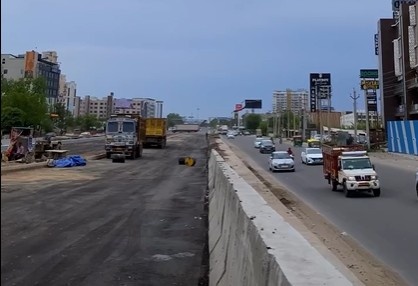APRIL 9: The Cabinet Committee on Economic Affairs (CCEA), chaired by Prime Minister Shri Narendra Modi, has given its approval for the construction of a 6-lane Zirakpur Bypass, a key infrastructure project designed to address traffic congestion in the highly urbanized regions of Zirakpur, Panchkula, and surrounding areas. This bypass, which spans 19.2 kilometers, will be built under the NH(O) scheme on a Hybrid Annuity Mode (HAM) and will have a capital cost of Rs. 1878.31 crore.
The new bypass will begin at the junction with NH-7 (Zirakpur-Patiala) and will end at the junction with NH-5 (Zirakpur-Parwanoo), traversing the states of Punjab and Haryana. The road alignment, planned according to the Punjab Government Master Plan, is strategically designed to bypass the congested urban stretches of Zirakpur in Punjab and Panchkula in Haryana, allowing for smoother traffic flow and reduced congestion. This project is a crucial step in facilitating the development of integrated transport infrastructure under the PM Gatishakti National Master Plan, which aims to optimize multi-modal connectivity across the country.
The primary objective of the Zirakpur Bypass project is to decongest the heavily trafficked regions of Zirakpur, Panchkula, and Mohali by diverting traffic heading towards Patiala, Delhi, Mohali Aerocity, and providing direct connectivity to Himachal Pradesh. With increased traffic volumes in these regions, the new bypass is expected to significantly reduce travel time, alleviate traffic bottlenecks, and ensure a smoother and more efficient transportation network along NH-7, NH-5, and NH-152. This will not only improve the local transportation ecosystem but also enhance the regional connectivity between major hubs like Chandigarh, Mohali, and Panchkula.
The government’s focus on urban decongestion is reflected in this project, as it is part of a broader initiative to create a ring road around Chandigarh, Panchkula, and Mohali. The Zirakpur Bypass is an essential component of this larger plan aimed at addressing the growing transportation needs of the urban agglomeration and ensuring that the road network can handle the increasing traffic load in a sustainable and efficient manner.
With the approval of this project, the government continues to emphasize the importance of developing modern infrastructure to meet the demands of India’s rapidly growing urban centers, enhancing both the quality of life for citizens and the country’s overall economic development.




















